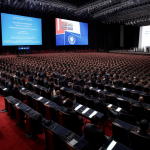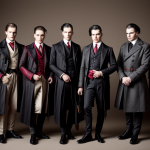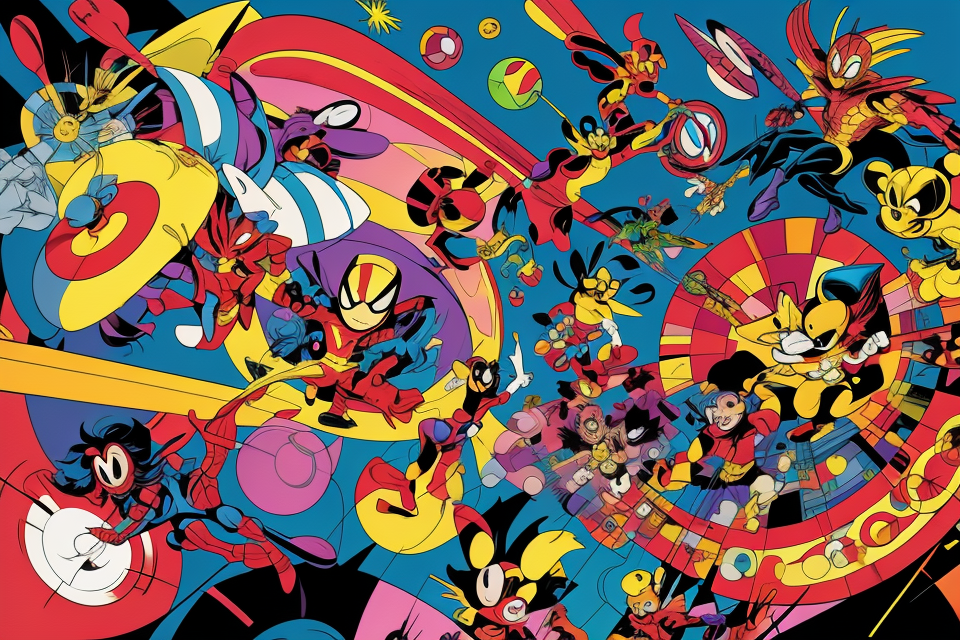When it comes to the world of entertainment, two names are synonymous with excitement and adventure – Marvel and Disney. But is Marvel actually considered a part of Disney? This question has been asked by fans and critics alike, and in this article, we will explore the relationship between these two giants of the entertainment industry.
Marvel, known for its superheroes like Iron Man, Captain America, and Spider-Man, was founded in 1938 by Timely Publications, which later became Marvel Comics. Disney, on the other hand, has been a household name since 1923, known for its magical characters like Mickey Mouse, Cinderella, and Snow White.
In 2009, Disney acquired Marvel Entertainment for a whopping $4 billion, which led to the integration of Marvel’s characters into the Disney universe. But does this mean that Marvel is now a subsidiary of Disney? Let’s dive into the details and find out.
Are you ready to explore the fascinating relationship between Marvel and Disney? Let’s get started!
Marvel: An Overview
The Evolution of Marvel
The Marvel universe has come a long way since its inception in 1939 with the publication of Marvel Comics #1, which introduced the world to the likes of Superheroes such as Captain America and Sub-Mariner. Over the years, Marvel has grown to become one of the most successful and influential comic book companies in the world, with a vast and intricate universe of characters and stories that have captured the imaginations of generations of fans.
One of the key factors in Marvel’s success has been its ability to evolve and adapt to changing times and trends. From the Silver Age of comics in the 1950s and 1960s, to the Bronze Age and beyond, Marvel has consistently produced some of the most groundbreaking and innovative comics in the industry.
In the 1970s, Marvel embraced a more mature and socially conscious approach to storytelling, with titles like The Amazing Spider-Man and The Incredible Hulk tackling complex themes such as race, politics, and social issues. This new direction helped to establish Marvel as a leader in the comics industry, and paved the way for the company’s continued growth and success in the decades to come.
In the 1980s and 1990s, Marvel continued to push the boundaries of comic book storytelling, with iconic series like The Uncanny X-Men and The Avengers introducing new characters and plotlines that would go on to shape the Marvel universe for years to come. The company also began to explore new media, with animated series and movies bringing its characters to life outside of the comics.
In the 2000s, Marvel’s success continued to soar, with the launch of the Marvel Cinematic Universe (MCU) in 2008, which would go on to become one of the most successful film franchises of all time. The MCU brought together some of Marvel’s most iconic characters, such as Iron Man, Captain America, and Thor, in a series of interconnected movies that captivated audiences around the world.
Today, Marvel continues to be a dominant force in the comics and entertainment industries, with a vast and ever-expanding universe of characters and stories that show no signs of slowing down. Whether in comics, movies, or television, Marvel’s impact on popular culture is undeniable, and its influence can be seen in the countless books, movies, and shows that have been inspired by its unique brand of storytelling.
Marvel’s Most Iconic Characters
Marvel Comics has created numerous beloved characters over the years, many of which have become household names. Some of the most iconic Marvel characters include:
- Spider-Man:
Peter Parker, also known as Spider-Man, is a high school student who gains spider-like abilities after being bitten by a radioactive spider. He uses his powers to fight crime and protect the citizens of New York City. - Iron Man:
Tony Stark, also known as Iron Man, is a billionaire inventor and playboy who creates a suit of armor to save his life after being kidnapped and injured. He uses his suit to fight crime and protect the world as Iron Man. - The Avengers:
The Avengers is a team of superheroes consisting of Iron Man, Captain America, Thor, Hulk, Black Widow, and Hawkeye. They come together to fight against threats that no single hero can handle alone. - Thor:
Thor is the god of thunder in Norse mythology and is also a Marvel Comics character. He is the son of Odin, the king of Asgard, and wields a powerful hammer called Mjolnir. - Black Panther:
T’Challa, also known as Black Panther, is the king of Wakanda, a technologically advanced African nation. He has superhuman abilities and uses his knowledge and skills to protect his country and the world. - Captain America:
Steve Rogers, also known as Captain America, is a World War II veteran who is transformed into a super-soldier with enhanced strength and agility. He fights for justice and upholds the values of freedom and democracy. - The X-Men:
The X-Men are a team of mutants, individuals born with genetic mutations that give them superhuman abilities. They fight for their rights and protect the world from threats, both human and mutant.
These are just a few examples of the many iconic Marvel characters that have captured the hearts and imaginations of readers and fans around the world.
Disney: An Overview
The History of Disney
Disney, founded in 1923 by Walt Disney and his brother Roy, is one of the largest and most successful media conglomerates in the world. Over the years, Disney has expanded its operations from its original focus on animation and film production to encompass a wide range of industries, including theme parks, television, and consumer products.
The company’s early years were marked by the creation of beloved characters such as Mickey Mouse, Donald Duck, and Snow White, as well as the development of groundbreaking animation techniques. In the 1950s, Disney entered the television industry with the creation of the popular show “Disneyland,” which was later followed by other successful programs such as “The Mickey Mouse Club” and “Walt Disney’s Wonderful World of Color.”
In the 1960s, Disney opened its first theme park, Disneyland, in Anaheim, California, which was later followed by the opening of Disney World in Florida in 1971. In the 1980s, Disney expanded its portfolio of characters with the acquisition of the Marvel Comics and Lucasfilm, which added iconic characters such as Spider-Man, Iron Man, and Darth Vader to its roster.
In recent years, Disney has continued to expand its reach through acquisitions such as Pixar Animation Studios, Marvel Entertainment, and Lucasfilm, as well as the launch of its own streaming service, Disney+. Today, Disney is a global brand with a presence in nearly every aspect of the entertainment industry, and its characters and stories are beloved by audiences of all ages around the world.
Disney’s Diverse Range of Properties
Disney is a multinational entertainment conglomerate that boasts a vast and diverse range of properties, encompassing everything from movies and television shows to theme parks and consumer products. Some of the most well-known Disney properties include the iconic cartoon characters Mickey Mouse and Donald Duck, the classic films Snow White and the Seven Dwarfs and Cinderella, and the beloved animated series The Lion King and Frozen.
In addition to these iconic brands, Disney also owns a number of other major film studios, including Pixar, Marvel, and Lucasfilm, as well as a range of television networks, including ABC, ESPN, and the Disney Channel. The company’s theme park division operates a number of popular attractions around the world, including Disneyland in California, Walt Disney World in Florida, and Tokyo Disneyland in Japan.
Disney’s consumer products division is also a major player in the global marketplace, with a wide range of merchandise available, including toys, clothing, and home decor items featuring the company’s various characters and brands. The company’s reach is truly global, with operations in over 40 countries and a significant presence in the online world through its various websites and social media channels.
Despite its vast range of properties and operations, Disney remains true to its roots as a family-friendly entertainment company, with a focus on creating high-quality content that appeals to audiences of all ages. Whether it’s through its beloved cartoon characters, blockbuster movies, or immersive theme park experiences, Disney continues to be a major force in the world of entertainment and beyond.
The Acquisition of Marvel by Disney
Background on the Acquisition
In 2009, Disney made a historic acquisition of Marvel Entertainment for a whopping $4 billion. This move marked a significant shift in the entertainment industry, bringing together two of the most iconic brands in the world.
Disney had been eyeing Marvel for quite some time, recognizing the value of its extensive library of characters and properties. The acquisition was seen as a strategic move to expand Disney’s portfolio of intellectual property and further solidify its position as a leader in the entertainment industry.
The deal was met with mixed reactions from fans and analysts alike. Some saw it as a brilliant move that would create new opportunities for collaboration and innovation, while others worried about the potential loss of creative independence and the dilution of Marvel’s brand identity.
Despite these concerns, the acquisition was ultimately approved and completed in 2010. Since then, Disney has worked to integrate Marvel into its existing operations, leveraging its resources and expertise to help Marvel expand its reach and grow its business.
Today, the relationship between Marvel and Disney remains strong, with both companies continuing to collaborate on a wide range of projects across multiple platforms. The acquisition has proven to be a successful move for both parties, with Marvel thriving under Disney’s guidance and Disney benefiting from the creative and commercial potential of the Marvel brand.
Motivations Behind the Acquisition
The acquisition of Marvel by Disney was a strategic move aimed at expanding Disney’s portfolio of intellectual property and diversifying its revenue streams. Here are some of the key motivations behind the acquisition:
Diversification of Disney’s Intellectual Property
At the time of the acquisition, Disney’s core business was focused on family-oriented content, with popular franchises such as Disney Princesses, Mickey Mouse, and Pixar Animation Studios. The acquisition of Marvel allowed Disney to diversify its intellectual property portfolio and cater to a broader audience, including fans of superheroes and science fiction.
Access to Marvel’s Successful Franchises
Marvel had already established a track record of success with its movie franchises, such as Iron Man, Thor, and The Avengers. By acquiring Marvel, Disney gained access to these successful franchises and could leverage them to drive revenue growth through merchandising, theme parks, and other brand extensions.
Strategic Alignment with Disney’s Corporate Strategy
The acquisition of Marvel was also aligned with Disney’s long-term corporate strategy, which included expanding into new markets and geographies, investing in technology, and creating new revenue streams. The acquisition of Marvel allowed Disney to enter the superhero genre and capitalize on its popularity, while also investing in emerging technologies such as digital distribution and immersive entertainment experiences.
Enhancement of Disney’s Global Presence
Finally, the acquisition of Marvel helped Disney enhance its global presence and reach new audiences. Marvel had a strong fan base in international markets, particularly in Asia, where the superhero genre was gaining popularity. By acquiring Marvel, Disney could tap into these markets and expand its global footprint, while also diversifying its revenue streams and reducing its dependence on the US market.
Integration of Marvel into Disney
Collaboration Between Marvel and Disney
In 2009, Marvel Entertainment entered into a historic partnership with The Walt Disney Company, which significantly altered the landscape of the entertainment industry. This collaboration brought together two powerhouse brands, each with a unique legacy and a rich history of storytelling. The merger has led to a seamless integration of Marvel’s characters and properties into Disney’s vast array of media franchises, resulting in an unprecedented level of synergy and cross-promotion.
The collaboration between Marvel and Disney has been characterized by a strong sense of mutual respect and a shared vision for the future of storytelling. Both companies recognized the value in combining their strengths to create a formidable entertainment empire that could deliver a wide range of content across multiple platforms.
One of the key aspects of this collaboration has been the successful integration of Marvel’s iconic characters into Disney’s existing franchises. This has resulted in a plethora of new opportunities for storytelling, including crossover events, team-ups, and expanded universes. The merger has allowed for the creation of new and innovative narratives that blend the best of both worlds, while also ensuring that each company’s unique voice and style remains intact.
Furthermore, the collaboration has opened up new avenues for character development and world-building. The combined resources of Marvel and Disney have enabled the creation of more elaborate and intricate storylines, which have further enriched the fan experience. The partnership has also allowed for a more cohesive and integrated approach to marketing and promotion, resulting in increased visibility and a broader reach for both Marvel and Disney properties.
Another significant aspect of the collaboration has been the development of new technologies and platforms to enhance the overall consumer experience. The merger has led to the creation of cutting-edge technologies that have revolutionized the way stories are told and consumed. From virtual reality experiences to immersive theme park attractions, the collaboration has allowed for the seamless integration of storytelling and technology, resulting in a more engaging and interactive experience for fans of all ages.
Overall, the collaboration between Marvel and Disney has been a resounding success, with each company benefiting from the other’s strengths and expertise. The merger has resulted in a more diverse and dynamic entertainment landscape, providing fans with an ever-expanding universe of stories and characters to explore and enjoy. As the partnership continues to evolve and expand, it is clear that the future of storytelling lies in the capable hands of these two industry giants.
Merchandising and Marketing Opportunities
Marvel’s integration into Disney has opened up numerous merchandising and marketing opportunities for both companies. One of the most significant merchandising opportunities is the production of Marvel-themed merchandise. Disney has produced a wide range of Marvel-themed merchandise, including clothing, toys, and other collectibles. This merchandise is sold in Disney stores and online, as well as in other retail outlets.
In addition to merchandising, Marvel’s integration into Disney has also created marketing opportunities. Disney has used Marvel’s popularity to promote its other products and services, such as its theme parks and movies. For example, Disney has included Marvel characters in its theme park attractions and shows, and has featured Marvel characters in its movies and television shows.
Furthermore, Marvel’s integration into Disney has allowed for cross-promotion opportunities. Disney has used Marvel’s popularity to promote its other brands, such as its sports teams and its cable channels. Similarly, Marvel has used Disney’s reach and resources to promote its own products and services, such as its comic books and its movies.
Overall, the merchandising and marketing opportunities created by Marvel’s integration into Disney have been a significant factor in the success of both companies. These opportunities have allowed them to reach new audiences and expand their reach into new markets.
Challenges and Criticisms
Balancing Creative Independence and Corporate Oversight
Navigating the Fine Line Between Creativity and Business Interests
The relationship between Marvel and Disney presents a unique challenge in balancing creative independence with corporate oversight. On one hand, it is essential for Marvel to maintain its creative autonomy to produce high-quality content that resonates with audiences. On the other hand, Disney, as the parent company, must ensure that Marvel’s decisions align with the larger corporate goals and financial performance.
The Importance of Creative Independence for Marvel
Marvel’s creative independence is crucial for the success of its franchises. With a rich history of comic book characters and storylines, Marvel has developed a dedicated fan base that expects a certain level of authenticity and fidelity to the source material. Allowing Marvel to operate with a degree of autonomy ensures that the creative vision of its producers and filmmakers is preserved, resulting in higher-quality content that resonates with audiences.
The Role of Disney in Overseeing Marvel’s Operations
While Marvel requires creative independence, Disney also plays a crucial role in overseeing its operations. As the parent company, Disney is responsible for managing the financial performance of Marvel and ensuring that its decisions align with the larger corporate goals. This includes monitoring the production budgets, marketing strategies, and overall financial performance of Marvel’s franchises.
The Balancing Act: Finding the Right Balance Between Creativity and Business Interests
The key to navigating this challenge lies in finding the right balance between creative independence and corporate oversight. Marvel must be given the freedom to pursue its creative vision while still aligning with Disney’s larger corporate goals. This requires a delicate balancing act that involves clear communication, collaboration, and a shared understanding of the priorities and expectations of both parties.
Overcoming Obstacles and Maintaining the Integrity of the Marvel Brand
Despite these challenges, Marvel and Disney have been successful in maintaining the integrity of the Marvel brand while still aligning with the larger corporate goals of Disney. This requires a commitment to open communication, shared values, and a deep understanding of the unique needs and priorities of both Marvel and Disney. By finding the right balance between creative independence and corporate oversight, Marvel and Disney can continue to produce high-quality content that resonates with audiences and drives financial success.
Difficulties in Integrating Two Iconic Brands
The acquisition of Marvel by Disney presented numerous challenges in integrating two iconic brands. The merger of these two companies brought together different worlds, including superheroes, fairy tales, and animated characters. This integration required a delicate balance to maintain the distinct identities of both brands while also creating a cohesive storyline.
One of the primary difficulties in integrating the two brands was the contrasting target audiences. Marvel was traditionally known for its comic book characters and action-packed storylines, while Disney was famous for its family-friendly films and beloved characters. Merging these two worlds required a careful approach to ensure that both fan bases were satisfied.
Another challenge was the management of the Marvel brand itself. The company had a reputation for being rebellious and edgy, which sometimes conflicted with Disney’s family-friendly image. This difference in brand identity had to be navigated carefully to avoid alienating either fan base.
Moreover, the integration of Marvel into Disney’s business model required a shift in focus for both companies. Disney had to adapt to the fast-paced, dynamic nature of the superhero genre, while Marvel had to navigate the complexities of the movie industry. This shift was not without its challenges, as both companies had to learn to work together in a new way.
Overall, the integration of Marvel and Disney required a delicate balance between maintaining the distinct identities of both brands while also creating a cohesive storyline. It was a complex process that demanded the careful management of two iconic brands and their respective fan bases.
The Future of Marvel and Disney
Ongoing Collaboration and Expansion
Since the acquisition of Marvel by Disney in 2009, the two companies have continued to collaborate and expand their reach in the entertainment industry. Here are some of the key aspects of their ongoing collaboration and expansion:
Integration of Marvel into Disney’s Operations
One of the significant outcomes of the acquisition was the integration of Marvel into Disney’s operations. This integration has led to the creation of new opportunities for both companies to expand their reach and impact in the entertainment industry. For instance, Marvel’s characters and stories have been incorporated into various Disney products, including movies, television shows, and theme parks.
Collaboration on New Projects
Marvel and Disney have also collaborated on new projects, which have further strengthened their relationship. For example, they have jointly produced movies such as Avengers: Endgame, which broke box office records and became one of the highest-grossing movies of all time. They have also collaborated on the development of new theme park attractions, such as the Guardians of the Galaxy roller coaster at Disneyland.
Expansion into New Markets
Another aspect of the ongoing collaboration between Marvel and Disney is the expansion into new markets. This expansion has been facilitated by the growth of the digital entertainment industry, which has opened up new opportunities for both companies to reach new audiences and expand their brand reach. For instance, Marvel and Disney have developed new digital platforms, such as Disney+, which has become a major player in the streaming industry.
Continued Innovation and Growth
Finally, the ongoing collaboration between Marvel and Disney has been characterized by continued innovation and growth. Both companies have continued to invest in new technologies and creative ideas to create innovative and engaging entertainment experiences for their audiences. For example, Marvel has developed new virtual reality experiences that allow fans to immerse themselves in the Marvel universe, while Disney has continued to develop new technologies to enhance the guest experience at its theme parks.
Overall, the ongoing collaboration and expansion between Marvel and Disney are a testament to the strength and resilience of their relationship. As the entertainment industry continues to evolve, it is likely that this relationship will continue to thrive and grow, bringing new and exciting experiences to audiences around the world.
Potential Impact on the Entertainment Industry
The relationship between Marvel and Disney has been a dominant force in the entertainment industry for many years. With the integration of Marvel into the Disney umbrella, the potential impact on the industry is significant. Here are some possible ways this relationship could shape the future of the entertainment industry:
- Expansion of Franchises: With Disney’s vast resources and expertise in producing family-friendly content, the Marvel franchise can expect to expand further. This could include new movies, TV shows, and even theme park attractions, potentially increasing the brand’s global reach and popularity.
- Increased Competition: The integration of Marvel into Disney may intensify competition within the industry. Other studios may feel pressured to produce more comic book-based content to keep up with the juggernaut that is the Marvel-Disney partnership. This could lead to more innovative and diverse content, benefiting audiences in the long run.
- Technological Advancements: The marriage of Marvel and Disney may drive technological advancements in the entertainment industry. Disney’s expertise in animation and special effects, combined with Marvel’s cutting-edge storytelling, could result in more visually stunning and immersive experiences for audiences. This could include virtual reality and augmented reality experiences, as well as more sophisticated filming techniques.
- Cross-Promotion Opportunities: The merger of Marvel and Disney creates numerous cross-promotion opportunities. Characters from Marvel’s vast universe can now appear in Disney’s movies, TV shows, and theme parks, expanding the potential audience for each franchise. This could lead to increased revenue and brand recognition for both Marvel and Disney.
- Increased Global Reach: With Disney’s global presence, Marvel’s content can now reach a wider audience. Disney’s extensive distribution network can ensure that Marvel’s movies and TV shows are accessible to audiences worldwide, further increasing the brand’s popularity and cultural impact.
In conclusion, the relationship between Marvel and Disney has the potential to significantly impact the entertainment industry. The future of this partnership may result in expanded franchises, increased competition, technological advancements, cross-promotion opportunities, and increased global reach. It will be exciting to see how this relationship evolves and shapes the future of the entertainment industry.
FAQs
1. What is the relationship between Marvel and Disney?
Marvel Entertainment, LLC is a subsidiary of The Walt Disney Company. Disney acquired Marvel Entertainment, Inc. in 2009, making Marvel a part of the Disney family of companies. This acquisition allowed Disney to expand its portfolio of brands and franchises, and it has enabled Marvel to access Disney’s resources and distribution networks.
2. Is Marvel its own company?
No, Marvel is not its own company. It is a subsidiary of The Walt Disney Company, which acquired Marvel Entertainment, Inc. in 2009. Marvel’s operations are overseen by Disney, and it operates as a division of the larger company.
3. What does the acquisition of Marvel by Disney mean for Marvel’s fans?
The acquisition of Marvel by Disney has had a positive impact on Marvel’s fans. It has allowed Marvel to access Disney’s resources and distribution networks, which has helped to expand the reach of its characters and stories. Disney has also invested in the development of new Marvel content across various platforms, including movies, television shows, and theme parks.
4. How has the acquisition of Marvel by Disney affected the Marvel brand?
The acquisition of Marvel by Disney has had a significant impact on the Marvel brand. It has helped to expand the reach of Marvel’s characters and stories, and it has allowed Marvel to access Disney’s resources and distribution networks. Disney has also invested in the development of new Marvel content across various platforms, which has helped to maintain the brand’s relevance and popularity.
5. Is Marvel still a separate entity from Disney?
Marvel is not a separate entity from Disney. It is a subsidiary of The Walt Disney Company, and its operations are overseen by Disney. Marvel operates as a division of the larger company, and it has access to Disney’s resources and distribution networks.









